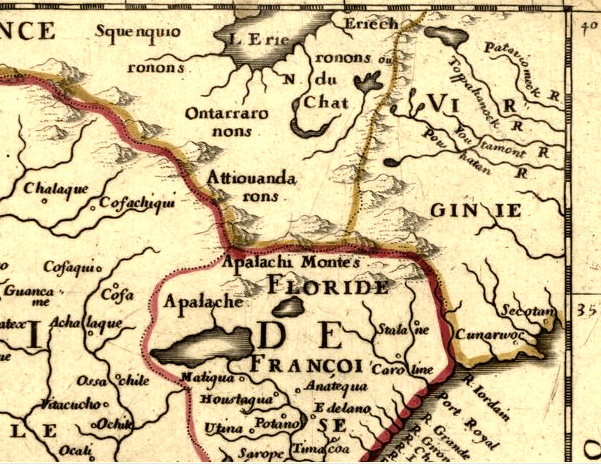Governor Spotswood's Defense of the Frontier
In 1716, Governor Alexander Spotswood led the Knights of the Golden Horseshoe across the Blue Ridge. It was a fun trip, with lots of drinking as Spotswood sought to steer the next stage of English settlement along the Rappahannock where he controlled vast tracts of land.
However, Spotswood's encouragement of westward settlement was also good public policy for the empire of Great Britain. He recognized that the French had established close relationships with the tribes along the upper Ohio River and along the Great Lakes, and also along the Gulf Coast and the mouth of the Mississippi River. It was logical to assume that the French would try to connect the two and expand their control of the lands west of the Blue Ridge.
Spotswood saw the "big picture" of settlement patterns both inside and outside the boundaries of the Virginia colony. He sought to make peace with tribes on the frontiers of the colony, and was arranging the Treaty of Albany in 1722 when his replacement arrived in Williamsburg.
By stimulating English settlement near the Blue Ridge, Spotswood was extending the international competition between European rivals deeper into the North American continent. It took 125 years for the Europeans to actually move 125 miles inland from Jamestown to the Shenandoah Valley, and another 50 years before the French and Indian War determined which nation would control the Ohio River Valley.
Throughout that time, various landowners tried to attract French Protestants to settle on Virginia's northern, western, and southern frontiers. The gentry acquired claims to vast tracts of land based on their ability to recruit new settlers.
When new settlers actually arrived and purchased the land, the gentry acquired great wealth. Virginian leaders such as William Fitzhugh, Governor Spotswood, and William Byrd II managed to find opportunities to recruit French immigrants throughout the international competition. Today, much of the French heritage in Virginia is tied to the immigration of Huguenots, French Protestants attracted to Virginia by promises of economic opportunity and religious freedom.
Links
French and Indian War
Was Virginia Destined To Be English?
Virginia Places






